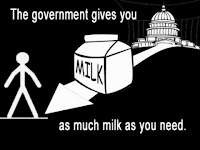Share this:
|Digg It |
Add to Technorati |
Save on Del.icio.us |
Stumble It |
Share on Facebook |
No, this is not about ecommerce. I know
the title could be a bit misleading, hence I wanted to clarify upfront that I
am not going to write about ecommerce.
How many times we return from shopping and realize that you
forgot to buy something or realize that you have run out of that favorite
shampoo which you did not put in your shopping list. Many a time, I wish the
aisles in the store would magically rearrange and I could straight away find
what I need without reaching out to a store assistant. These were the problems
that I was trying to solve when I came about this flash on a digitally enhanced
store assistant on my mobile device.
The concept is the user (someone like me) creates a shopping
list in a retailer website, mobile site gets synchronized on the app (if not
already entered using the app). When the user walks into the store, the ibeacon
identifies the user and links the app to the store planogram. The Augmented
reality enabled app then highlights the exact spots in the store where the
products that the user is interested in by overlaying highlights using the
store background. It also creates the shortest pathway to complete the shopping
faster. Enroute the shopping path, there are opportunities for the retailer to
highlight the most relevant offers that the user is most likely to be
interested in, and highlighted products that the user typically buys but did
not have on the list (as a reminder). The different product listing could be
color coded differently, for example the items on the shopping list – red,
promotions and offers – amber, and the reminder (personalized recommendations)
in green, etc.
This augmented reality app digitally
enhances the user’s physical shopping experience. Though there are already apps
that use augmented reality to highlight offers and products, the concept of
using augmented reality to personalize the shopping route and experience of the
user is what I would like to propagate.


